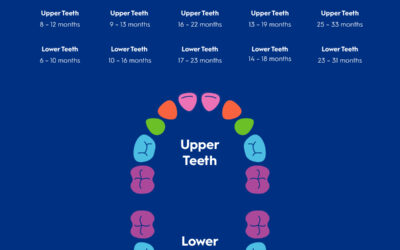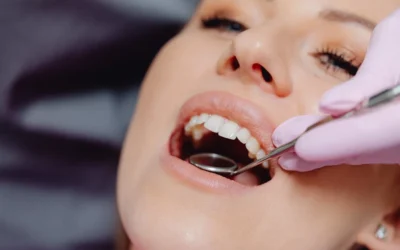Cavities, also known as dental caries or tooth decay, are a common dental issue that can affect any tooth, including the front teeth. Cavities on front teeth can develop when plaque isn’t cleaned off the tooth properly, leading to decay. Without mindful oral hygiene, these cavities can form quickly. Poor oral care allows plaque to build up, and over time, it turns into a cavity. For semi-young cavities, a filling is a great choice, as it involves removing the decayed portion of the tooth and restoring it with composite resin restoration. This method effectively treats cavities on front teeth, ensuring the tooth remains healthy and functional.
What Causes Cavities on Front Teeth?
Front tooth cavities are caused by the buildup of plaque; a sticky film of bacteria that forms on our teeth. When sugars and starches from food interact with these bacteria, they produce acids that erode tooth enamel, leading to cavities. Several factors can contribute to the formation of cavities on the front teeth:
- Poor Oral Hygiene: Inadequate brushing and flossing can lead to plaque buildup on the front teeth. Plaque that isn’t removed hardens into tartar, which further facilitates decay.
- Diet: Frequent consumption of sugary or acidic foods and drinks can increase the risk of cavities. Sodas, candies, and even fruit juices can contribute to the erosion of tooth enamel.
- Dry Mouth: Reduced saliva production can allow plaque to accumulate more easily. Saliva helps neutralize acids produced by bacteria and washes away food particles.
- Genetics: Some people are more prone to cavities due to their genetic makeup, which may influence the strength of their enamel and their susceptibility to bacteria.
Symptoms of Front Tooth Cavities
Cavities on the front teeth can be easily noticed due to their location. Common symptoms include:
- Visible Holes or Spots: Cavities often appear as brown or black spots on the front teeth. These spots are usually more noticeable than those on the back teeth.
- Tooth Sensitivity: Increased sensitivity to hot, cold, or sweet foods and drinks can indicate the presence of a cavity. This sensitivity occurs because the enamel is worn away, exposing the more sensitive dentin layer underneath.
- Toothache: Persistent pain or discomfort in the affected tooth, especially when biting down or eating, can be a sign of a cavity.
- Rough or Jagged Edges: The surface of the tooth may feel rough or have jagged edges where the decay has created a hole or pit in the enamel.
Preventing Front Tooth Cavities
Prevention is key to maintaining healthy front teeth. Here are some tips to prevent cavities:
- Brush Regularly: Brush your teeth at least twice a day with fluoride toothpaste. Fluoride helps strengthen enamel and prevent decay.
- Floss Daily: Flossing helps remove plaque and food particles between teeth where a toothbrush can’t reach.
- Limit Sugary Foods and Drinks: Reduce your intake of sugary snacks and beverages. If you do consume them, try to brush your teeth afterward or rinse your mouth with water.
- Use Mouthwash: Antibacterial mouthwash can help reduce plaque and bacteria. Look for mouthwashes that contain fluoride for added protection.
- Regular Dental Visits: Visit your dentist for regular check-ups and cleanings. Professional cleanings remove tartar that you can’t eliminate with regular brushing and flossing.
- Healthy Diet: Eating a balanced diet rich in fruits, vegetables, and dairy products can promote good oral health. Foods high in calcium, such as milk, cheese, and yogurt, can help strengthen teeth.
Treatment Options for Front Tooth Cavities
If you suspect you have a cavity on a front tooth, it’s essential to seek dental treatment promptly. Treatment options include:
- Fillings: The most common treatment, where the dentist removes the decayed part of the tooth and fills it with a dental material. For front teeth, composite resin fillings are often used because they can be matched to the color of your teeth.
- Fluoride Treatments: For early-stage cavities, fluoride treatments can help restore enamel and reverse decay. These treatments can be applied as a gel, foam, or varnish during a dental visit.
- Dental Crowns: In cases of extensive decay, a crown may be necessary to cover and protect the tooth. Crowns can be made of porcelain, ceramic, or composite materials that resemble natural teeth.
- Root Canal: If the decay has reached the tooth’s pulp, a root canal may be required to remove the infected tissue and save the tooth. This procedure involves removing the damaged pulp, cleaning the tooth’s interior, and sealing it.
- Bonding: For small cavities or aesthetic concerns, dental bonding can be used to repair and enhance the appearance of the tooth. This involves applying a tooth-colored resin to the affected area and shaping it to blend in with the natural tooth.
Maintaining a Healthy Smile
Maintaining good oral hygiene and visiting your dentist regularly are crucial steps in preventing and treating cavities, especially on the front teeth. By following these tips and seeking prompt treatment, you can ensure a healthy and confident smile.
Additional Tips for Cavity Prevention
- Chew Sugar-Free Gum: Chewing sugar-free gum can help stimulate saliva production, which helps neutralize acids and wash away food particles.
- Drink Plenty of Water: Staying hydrated helps maintain saliva flow, which is essential for a healthy mouth. Water also helps rinse away food particles and bacteria.
- Avoid Snacking Frequently: Constant snacking, especially on sugary foods, provides a constant supply of fuel for bacteria in the mouth. Try to limit snacks and focus on balanced meals.
- Consider Dental Sealants: Dental sealants are a protective coating applied to the chewing surfaces of the back teeth, but they can also be used on the front teeth if necessary. They help protect against cavities by sealing out plaque and food.
Understanding the Impact of Cavities on Overall Health
Cavities are not just a cosmetic issue; they can have significant impacts on your overall health. Untreated cavities can lead to more severe dental issues such as abscesses, infections, and even tooth loss. Additionally, oral health is closely linked to general health. Poor oral health has been associated with conditions such as heart disease, diabetes, and respiratory infections.
When to See a Dentist
It’s essential to see your dentist regularly, but you should also make an appointment if you notice any signs of a cavity. Early detection and treatment can prevent more serious problems and help maintain your dental health. If you experience persistent tooth pain, sensitivity, or visible spots on your teeth, schedule a dental visit as soon as possible.
Front tooth cavities are a common dental issue that can be prevented with proper oral hygiene and a healthy diet. Understanding the causes, symptoms, and treatment options can help you take proactive steps to maintain your dental health. Regular dental check-ups are essential in catching and treating cavities early, ensuring your smile stays bright and healthy. Always follow your dentist’s advice and maintain good oral hygiene practices to keep your teeth in top condition.
For more detailed information and personalized advice, speak with Dr. Tanya on your next visit!





0 Comments